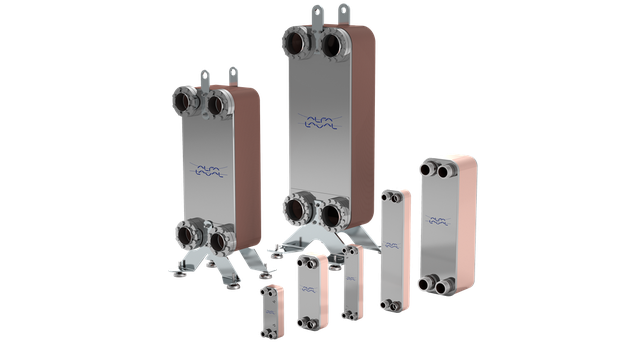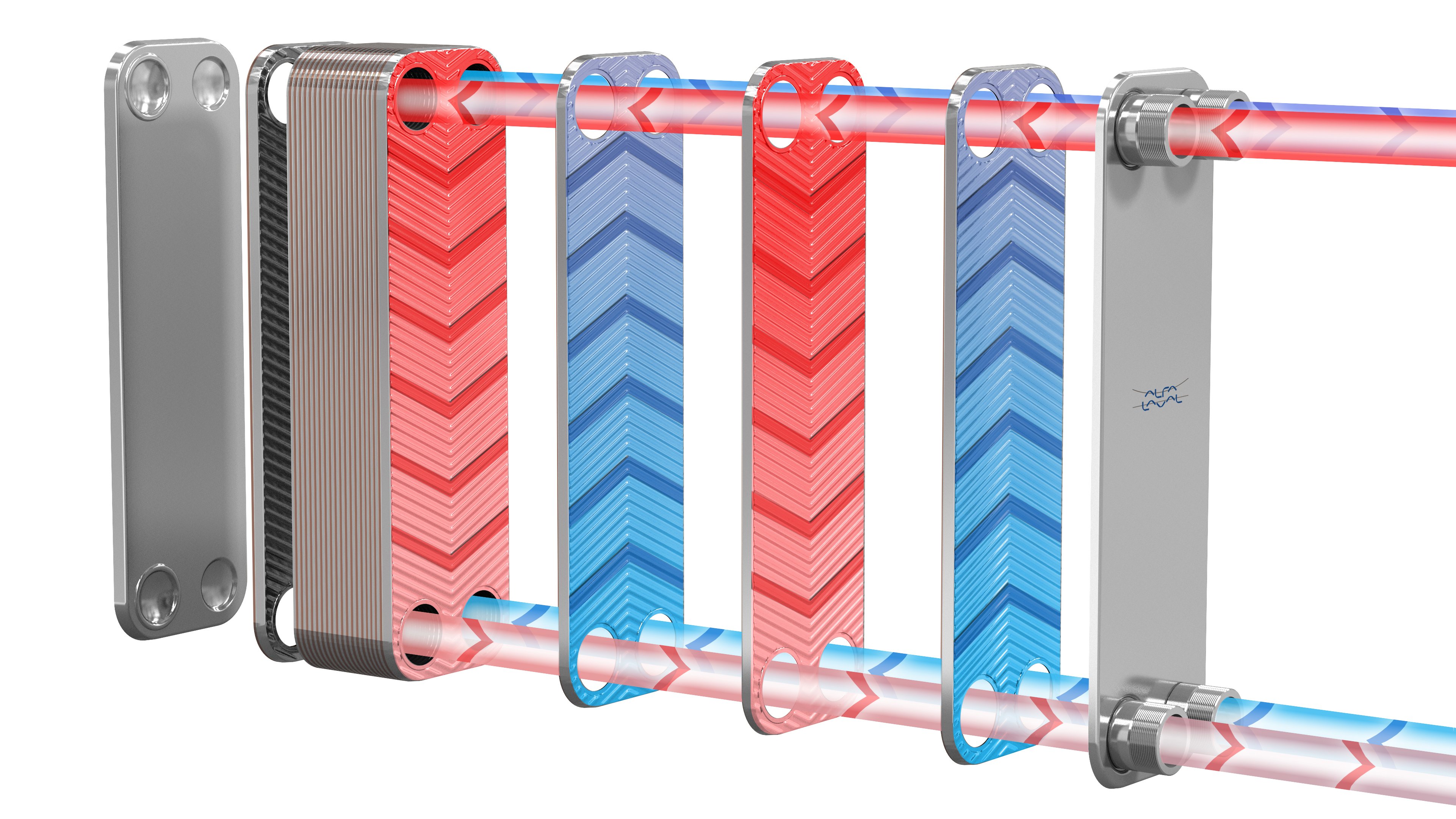CBAQ
The Alfa Laval CBAQ brazed plate heat exchangers are aimed at HVAC applications. The range is AHRI Certified® through the Liquid to Liquid Brazed & Fusion-bonded Plate Heat Exchangers (LLBF) Certification Program to ensure the thermal performance. The performance certification verifies that the product performs in accordance with the manufacturer's published rating. The heat exchangers are used in applications such as district energy systems, potable water heating and free cooling systems.
The Air Conditioning, Heating and Refrigeration Institute (AHRI) Standard 400 certification is an independent, third-party verification of thermal performance. Through its certification program and standards, AHRI strives to help customers save energy, improve their productivity and help to ensure a better environment.
AHRI Certified™ is the trusted mark of performance assurance for heating, ventilation, air conditioning and commercial refrigeration equipment. Products earning the mark undergo rigorous, independent annual evaluation to ensure that they perform according to the manufacturers’ published claims. Certifying HVACR equipment and component performance allows consumers to compare products based on independently verified performance ratings. To find AHRI Certified™ products, go to the AHRI directory.
AHRI Certification Procedures and Benefits
To certify a product to AHRI standards, the manufacturer submits specifications and performance data to AHRI for performance evaluation and potential certification.
Once certified, buyers and users can be assured that:
- The plate heat exchanger will perform in accordance with the manufacturer’s published ratings.
- Product performance can be easily compared for their specific application.
The CBAQ range of brazed plate heat exchangers has numerous advantages over traditional heat exchangers HVAC installations. The exceptional heat transfer efficiency makes all CBAQ units very compact. As a result, they can tackle large-capacity duties even though there is only limited installation space available.
The brazed construction also does away with gaskets, making CBAQ units ideal in applications where temperatures and/or pressures are high. Examples include district heating and a wide range of heating, cooling and tap water solutions.
Units in the CBAQ range are available in many different sizes and capacities.
Cost effective for everyone involved
End-users
- Reduces lifetime operating costs significantly by assuring a more energy-efficient system
- Ensures full investment value by reducing costs for field tests and additional component performance margins
Consultants
- Allows for the design of a system in which all the major components are independently performance certified
- Ensures that targets on power consumption and climate control can be met
- Provides a verifiable basis for heat exchanger selection
- Protects the owner and consulting engineer from performance concerns during commissioning and after installation
Contractors
- Ensures that all certified plate heat exchangers included in proposals will deliver the stated thermal performance
- Reduces troubleshooting time during commissioning and after start-up

Le programme de certification des performances de produits conçu par l'AHRI (Product Performance Certification Programme) est un programme volontaire, géré et piloté par l'AHRI, qui assure que les différents types d’équipements de chauffage, ventilation, climatisation, réfrigération et production d'eau chaude sanitaire se comportent conformément aux caractéristiques publiées par les fabricants.
Les équipements certifiés par le programme de certification des performances AHRI sont testés en permanence, selon les instructions de l'AHRI, par un laboratoire tiers indépendant sous contrat avec l'AHRI, afin de déterminer la capacité du produit à se conformer à une ou plusieurs normes de classification ou spécifications de produits.
Fonctionnement
La technologie du transfert thermique implique le rapprochement de deux fluides à des températures différentes pour que l'un chauffe ou refroidisse l'autre.
Conception
Un échangeur de chaleur à plaques brasées consiste en fines plaques d’acier inoxydable corruguées, empilées dans un ensemble de plaques et brasées au cuivre pur.
Le matériau de brasage étanchéifie et maintient les plaques ensemble aux points de contact, ce qui assure une efficacité du transfert thermique et une résistance à la pression optimales. La conception de la plaque garantit la durée de vie la plus longue possible. Le brasage des plaques d’acier inoxydable ensemble élimine le recours aux joints d’étanchéité et à des plaques de bâti épaisses.
Les pics de pression et changements rapides de températures imposent des contraintes physiques importantes sur les matériaux. La recherche d'Alfa Laval s'est concentrée sur les détails de ces phénomènes afin de s'assurer que les profils de plaques sont extrêmement résilients et assurent une longue durée de vie.
Principe de fonctionnement
Des canaux pour les fluides sont formés entre les plaques. Les deux fluides coulent dans les canaux alternativement à contre-courant, afin d'obtenir l'échange de chaleur le plus efficace. Le transfert d'énergie thermique d'un fluide à l'autre intervient sur la surface large. La corrugation des plaques est spécialement conçue pour induire des turbulences maximales et une distribution homogène des deux flux de fluides, afin que le transfert thermique soit aussi efficace que possible.
Matériaux
Les plaques et raccordements sont en acier inoxydable. Le brasage est effectué en cuivre pur.
Nettoyage
Les turbulences qui se produisent à l'intérieur de l'échangeur de chaleur ont un effet autonettoyant. Si un nettoyage s'avère quand même nécessaire, vous pouvez vous informer sur nos solutions de nettoyage en place (Nettoyage En Place).


